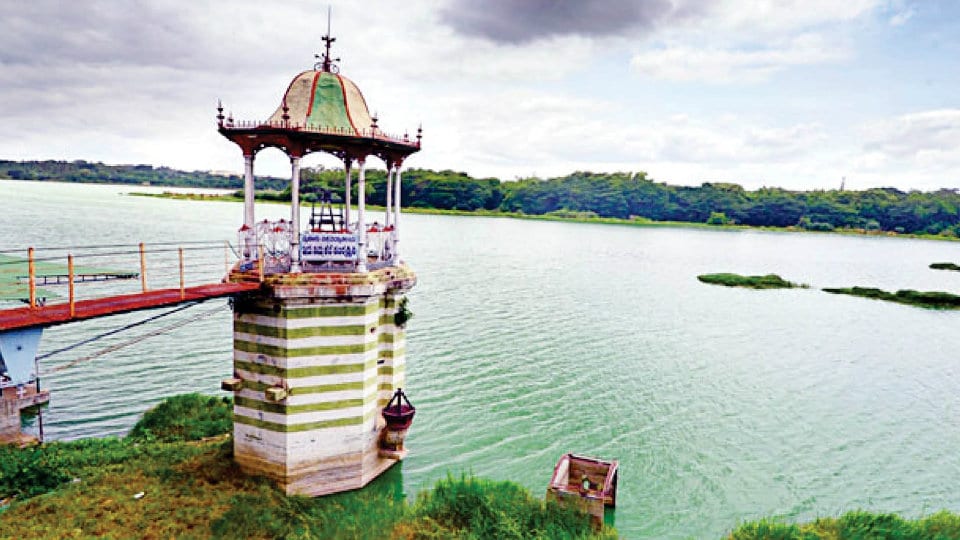Sir,
For the last 10 days, interesting observations, exaggerated statistics and impending threats to biodiversity of Kukkarahalli Lake are being discussed in different forums by different group of activists. All are ill-conceived. Please let the work continue.
On behalf of the University of Mysore, I assure the people of Mysuru that more biodiversity and natural beauty are bound to happen in the Kukkarahalli Lake in the coming days.
Today let me place the real fact. In spite of severe drought in Mysuru and elsewhere, if Kukkarahalli Lake is still functioning as an aquatic ecosystem, the credit must be given to the authorities of Mysore University and district administration. In spite of financial crunch both were responsible for connecting the Lake with underground pipe which supply roughly 300 gallons water per day in the form of backwash water released by the Vani Vilas water treatment facility. Due to this the Lake is still alive and the biodiversity has not been affected.
Hope, it will sustain for the next seasons and years also. Otherwise by this time the Lake would have been dried up in December itself along with many other Lakes in and around Mysuru district. The people of Mysuru city who visit the Kukkarahalli Lake morning and evening must know this fact that the inflow of water from the VVWW is responsible for maintenance of Lake. The Lake is functioning certainly not because of activism.
Kukkarahalli Lake is an artificial one. When 8-9 km feeder canal (Poornaiah canal) disappeared gradually by encroachment and when the Lake started receiving city sewage water for nearly 30-40 years in four corners, lake water is bound to get pollutants. The uncontrolled and untreated supply of sewage and solid wastes continuously is responsible for the accumulation of tonnes of silt in the form of organic and inorganic matter. This was in turn responsible for the frequent occurrence of algal blooms several times. Algal growth was also responsible for the death of many aquatic animals including fishes.
The best solution to water pollution problem is dilution. The inflow of water from VVWW reduced the concentrations of Nitrates and Phosphates and as a result algal bloom (Microcystis) incidences have reduced considerably in four regions of the Lake.
In the last 15 years, the University of Mysore and MCC have also made concerted efforts in reducing the influx of sewage, solid wastes including poultry wastes, barber shop wastes and immersion of Ganesha idols etc., to the Lake.
Right from Prof. S. N. Hegde to the present day, all Vice-Chancellors of Mysore University have made sincere efforts to make the Lake functioning and to serve as living aquatic ecosystem. Only in the last 10 years hundreds of people started visiting the Lake and are enjoying the morning and evening walks. Now few groups of people want to take credit for the good work done by the University of Mysore and district administration. They are claiming, as if they are the only expert people on ecology and biodiversity in Mysuru city, to have concern for Lake ecosystem and no one else.
I have not seen this type of activism when the Lake was dying few years back. When the Lake was stinking several times, none of the activists suggested any remedial measures to overcome the problem. Earlier attempts to remove the silt in certain pockets of the Lake was not successful, as the Lake water was full. Since it was not possible to remove the organic rich silt at that time, it was Mysore University that made alternate arrangements to remove the algal growth (Microcystis) physically with the help of people from garden department for several years. This process is still going on.
Experts from other parts of the world who visited Kukkarahalli Lake have also suggested to remove the organic rich silt in certain areas, so that algal blooms could be controlled effectively.
I strongly endorse the view expressed by the editor of Star of Mysore: “If silt is not removed in time, this Lake too will become bone dry and uninhabitable…” True. Throughout the world silt is removed from any Lake only during summer, so that water holding capacity is increased and de-silting helps to remove organic and inorganic matter accumulated over a period of time.
De-silting has never been done in Kukkarahalli Lake right from the date of its creation. The present de-silting plan undertaken by the administration is a wise move and appropriate as this removes silt only in certain parts of the Lake where water is not present and where silt has been accumulated over a period of time.
Since Kukkarahalli Lake has not been formed naturally, human intervention is certainly needed to correct the damage caused by the inflow of human waste (sewage). Other plan of activities for the Lake will not affect the overall functioning of biodiversity including plants, animals and microbes.
I also strongly disagree with the views of many activists that grants are being squandered in the name of meddling with the Tank. It is untrue.
– Prof. G. R. Janardhana, Chairman, Board of Studies in Botany, Dept. of Studies in Botany, Manasagangothri, 1.3.2017








Very well done Prof.Janaradhana sir. All the best.god bless Kukkarahali lake. Happy to see Desilting operations.great effort.